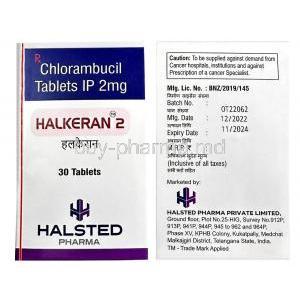Trastuzumab Injection
- I. Introduction
- II. Composition and Formulation
- III. Uses of Trastuzumab
- IV. Off-Label Uses of Trastuzumab
- V. How Trastuzumab Works
- VI. Dosage and Administration
- VII. Common Side Effects
- VIII. Serious Side Effects and Complications
- IX. Interactions with Other Medications
- X. Warnings and Precautions
- XI. Special Considerations
- XII. Overdosage
- XIII. Storage and Handling Precautions
- XIV. Important Precautions
I. Introduction
Trastuzumab is highly effective in treating HER2 cancers, like breast and gastric cancers. It has significantly changed the way these types of cancer are treated since it was first introduced and approved by the FDA.
II. Composition and Formulation
Trastuzumab core component is a monoclonal antibody tailored to target HER2 receptors supported by inactive ingredients that help maintain the stability and effectiveness of the formulation.

III. Uses of Trastuzumab
-
Trastuzumab (Herceptin®) in HER2-Positive Early Breast Cancer:
- Trastuzumab, also known as Herceptin, is an antibody-targeted therapy specifically designed for patients with HER2-positive early breast cancer (EBC).
- A comprehensive systematic review and cumulative network meta-analysis (cNMA) investigated the overall survival (OS) advantage conferred by adding Trastuzumab to chemotherapy for HER2+ EBC patients.
- The analysis demonstrated that Trastuzumab combined with chemotherapy significantly improved OS compared to chemotherapy alone.
- Over time, as additional OS data were published, the precision around this survival benefit strengthened, solidifying Trastuzumab/chemotherapy as the established standard of care for HER2+ EBC patients1.
-
Trastuzumab in HER2-Positive Metastatic Gastric Cancer:
- Trastuzumab has also shown promise in treating HER2-positive metastatic gastric cancer.
- This represents a notable breakthrough in gastro-oncology, offering hope to patients facing challenging situations.
- By targeting HER2, Trastuzumab improves survival rates for individuals with HER2-positive breast tumors, providing a ray of hope in the fight against cancer2.
IV. Off-Label Uses of Trastuzumab
V. How Trastuzumab Works
The way Trastuzumab works showcases the accuracy of medical practices by focusing on HER2 receptors to block the signals that drive cancer growth, ultimately leading to cell death in cancerous cells.
VI. Dosage and Administration
It is crucial to follow the prescribed doses that are customized for the patient's condition. When preparing and mixing Trastuzumab, it is essential to follow the protocol to guarantee that its therapeutic benefits are maximized.

VII. Common Side Effects
Although Trastuzumab offers advantages, it does come with some unwanted effects. Common issues include reactions during infusion and symptoms resembling the flu highlighting the need for approaches, to managing them.
VIII. Serious Side Effects and Complications
Embarking on the healing path with Trastuzumab comes with its ups and downs such as the risk of heart issues known as cardiotoxicity. This can signal heart problems, leading to the need for careful monitoring of cardiac health.
IX. Interactions with Other Medications
The combination of Trastuzumab, with medications requires a careful assessment to prevent any negative effects that may reduce its effectiveness or worsen toxicity.
X. Warnings and Precautions
Administering Trastuzumab requires attention to contraindications and existing health conditions to prevent negative effects.
XI. Special Considerations
Certain groups such, as individuals, expectant mothers, breastfeeding moms and kids need personalized dosage plans and increased monitoring to reduce potential risks and enhance the effectiveness of treatments.
XII. Overdosage
An excessive amount of Trastuzumab can lead to a variety of symptoms requiring prompt medical attention. These symptoms can range from mild to severe. May include breathing difficulties, fever, shivering, and heart issues. When an overdose is identified, healthcare providers are urged to start treating the symptoms away, highlighting the importance of closely monitoring and providing supportive care to reduce negative effects.
- Immediate steps involve stopping the administration of Trastuzumab and checking signs. Supportive care methods are adjusted based on the symptoms observed, emphasizing maintaining heart and lung function and dealing with reactions related to the medication infusion.
XIII. Storage and Handling Precautions
The effectiveness and safety of Trastuzumab depend on following the recommended storage guidelines and handling precautions. Due to the nature of this medication, it should be stored at temperatures between 2 and 8°C, shielded from light and protected from freezing.
- The manufacturer's specified shelf life emphasizes the importance of using Trastuzumab in a manner to maintain its potency. Healthcare professionals need to adhere to procedures during preparation to prevent any contamination.
- Proper disposal of expired Trastuzumab must comply with local regulations to ensure environmental protection.
XIV. Important Precautions
Throughout the journey of treatment with Trastuzumab, it is crucial to follow a variety of precautions to ensure the best treatment results and reduce potential risks. Keeping an eye on heart function is essential due to the risk of heart-related issues linked to this medication.
- Additionally taking steps to prevent known side effects, such as infusion reactions and blood related issues is key. This includes providing premedication and closely monitoring for any signs of adverse reactions. It is recommended to have heart tests to identify any hidden problems. Educating patients on how to recognize and report possible side effects and symptoms plays a role in early detection and management.










